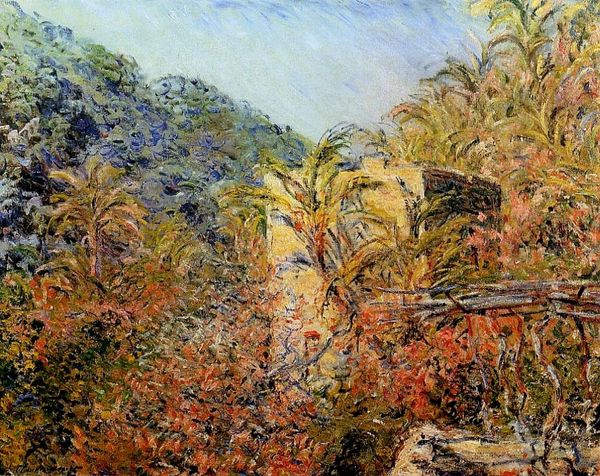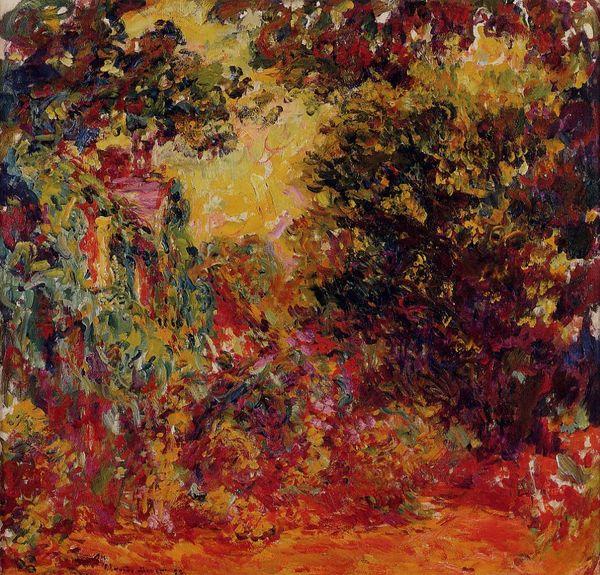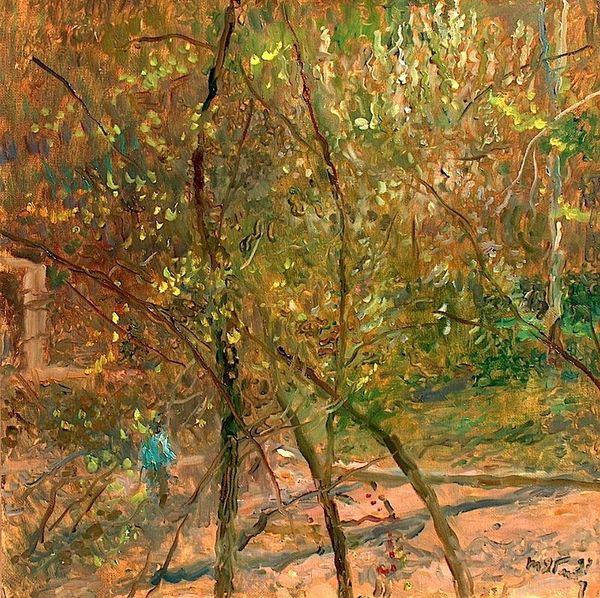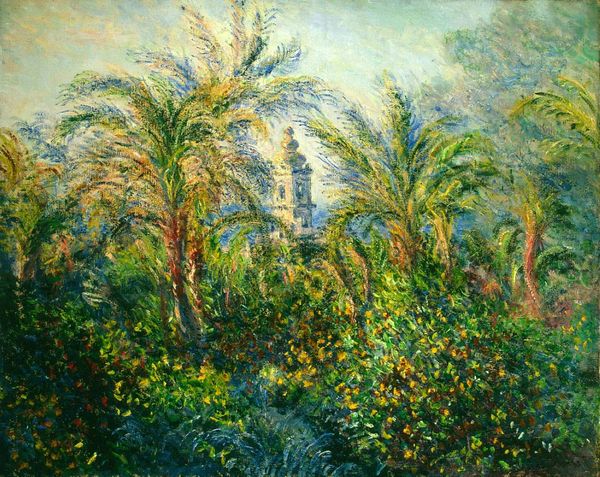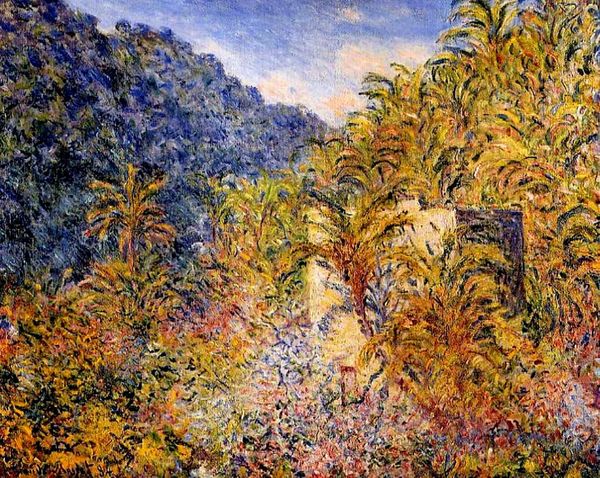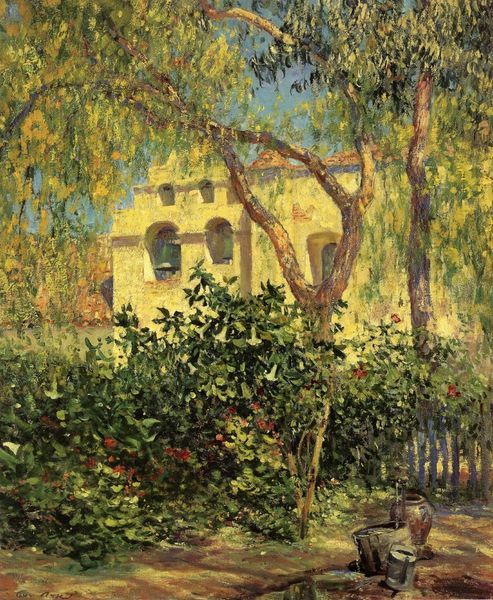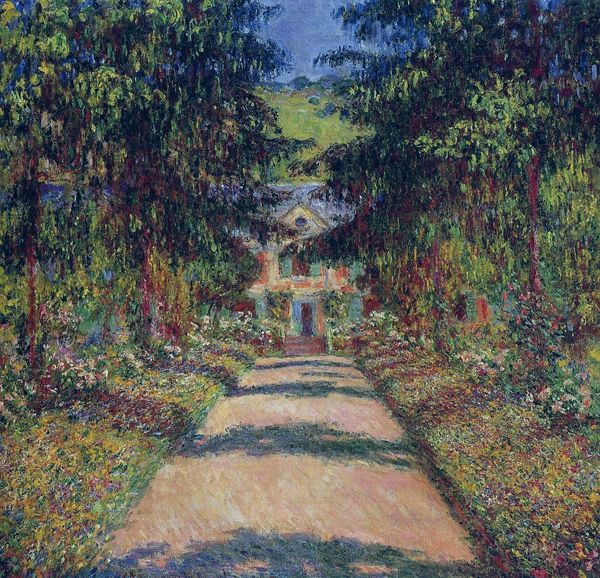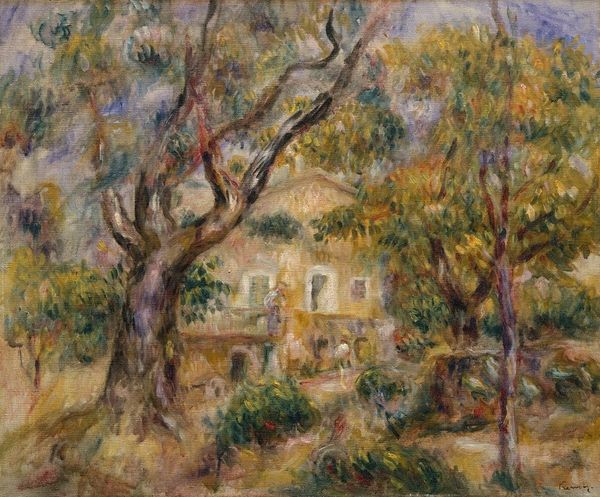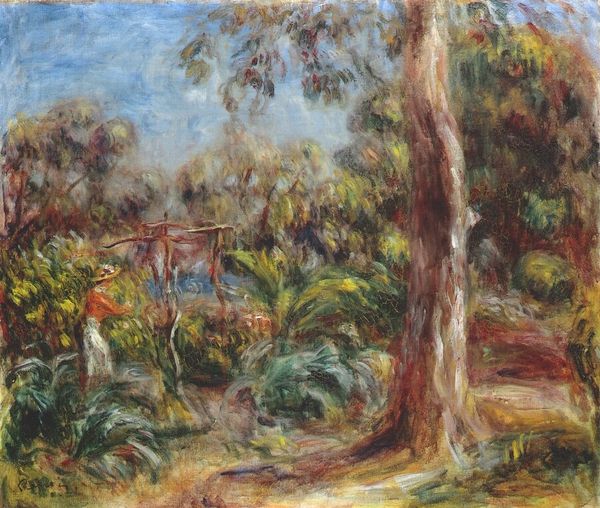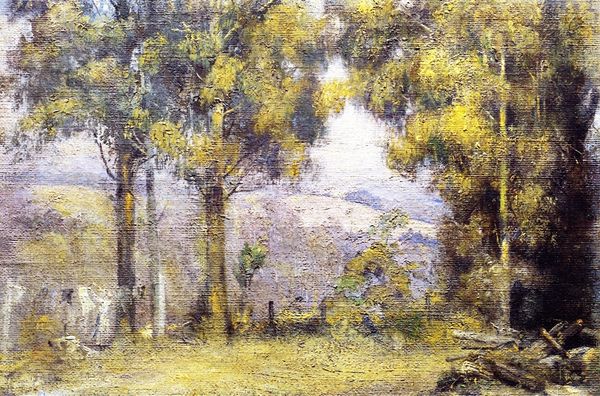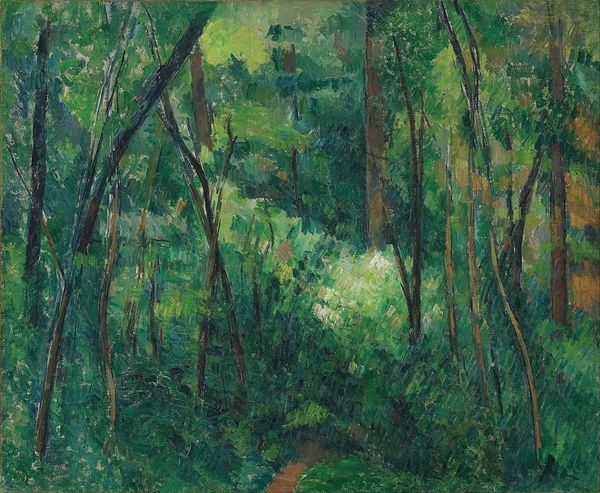
painting, plein-air, oil-paint
#
tree
#
sky
#
painting
#
impressionism
#
plein-air
#
oil-paint
#
landscape
#
leaf
#
impressionist landscape
#
nature
#
oil painting
#
plant
#
mountain
Copyright: Public domain
Curator: Claude Monet’s "The Valley of Sasso, Blue Effect," painted in 1884, presents us with a vibrant landscape, rich in colour and light. Editor: My initial feeling is one of being enveloped, almost consumed, by the dense foliage. There's an intensity in the layering of paint and a captivating interplay between the sun-drenched areas and the shadowed depths. Curator: It’s a fascinating example of Monet's Impressionist approach, particularly his focus on capturing fleeting moments and the effects of light and atmosphere, a hallmark of plein-air painting. We need to consider how Monet, as a white, male artist, engages with a space often associated with colonial narratives. What is the history of this place? How did it become a site for artistic production, and whose stories are silenced in its visual representation? Editor: Indeed. The materiality itself speaks volumes. Look at the brushstrokes – thick, almost sculptural in places, building up a textured surface. It really draws attention to the act of painting, to Monet's labor in rendering this scene, but it's crucial to acknowledge how that labor intersects with the larger social and economic systems. Were local workers, for example, involved in preparing the materials or grounds for his paintings? How does the access to these landscapes play out across class divides? Curator: It invites critical inquiry into how landscapes are both passively viewed and actively consumed through artistic expression. I’m interested in its relationship to gender, too; often women and other marginalised genders have historically been denied access to these traditionally valued painting spaces, which needs to be examined. Editor: Precisely. And consider the work involved in just transporting the materials, preparing the canvases, the sheer physical effort that went into creating this seemingly spontaneous depiction. We mustn't separate the artistic output from its material reality and production context. The labor embedded within needs to be surfaced, and this includes access and opportunity for the traditionally disenfranchised. Curator: Absolutely. Considering these intersectional aspects of gender, race, and socioeconomics enriches our interpretation and forces us to be aware of the biases in our understandings of artistic value and aesthetic taste. Editor: Analyzing the process of production helps ground the artistic experience in its real-world conditions. It is a valuable lens for re-examining canonical figures like Monet, enabling a richer, more socially conscious appreciation.
Comments
No comments
Be the first to comment and join the conversation on the ultimate creative platform.
